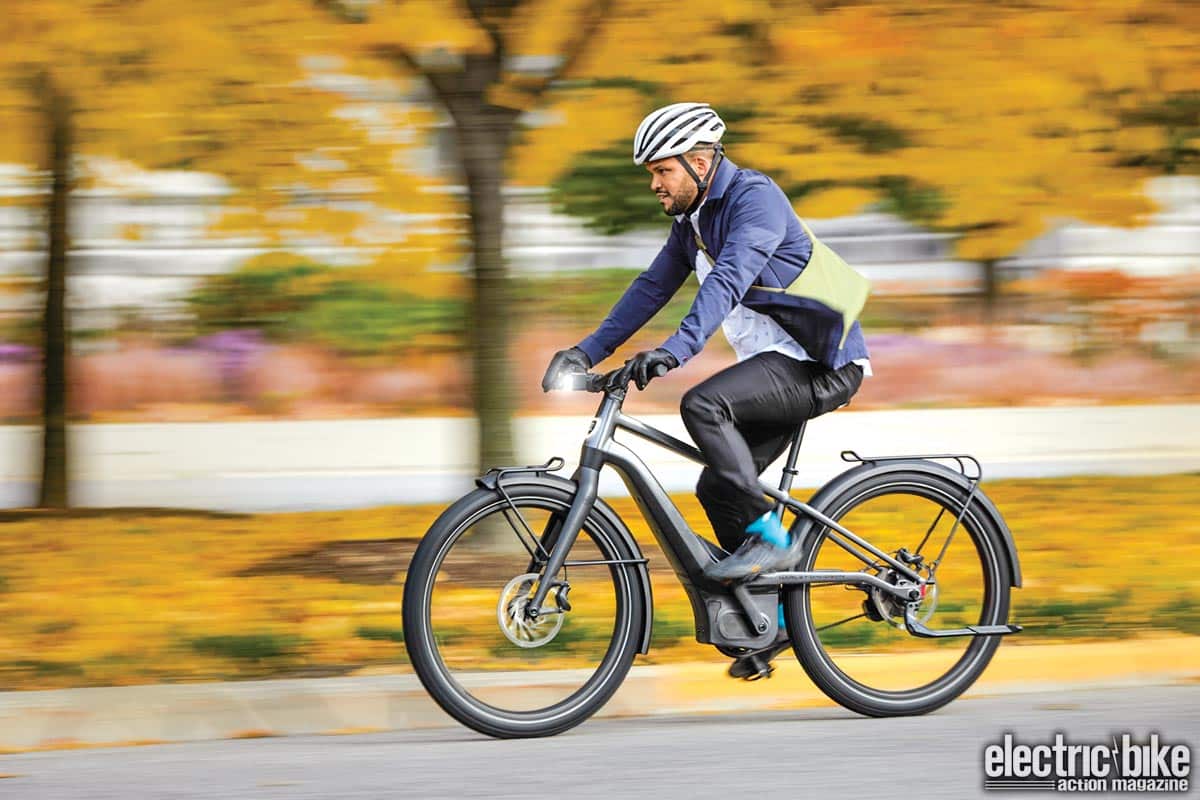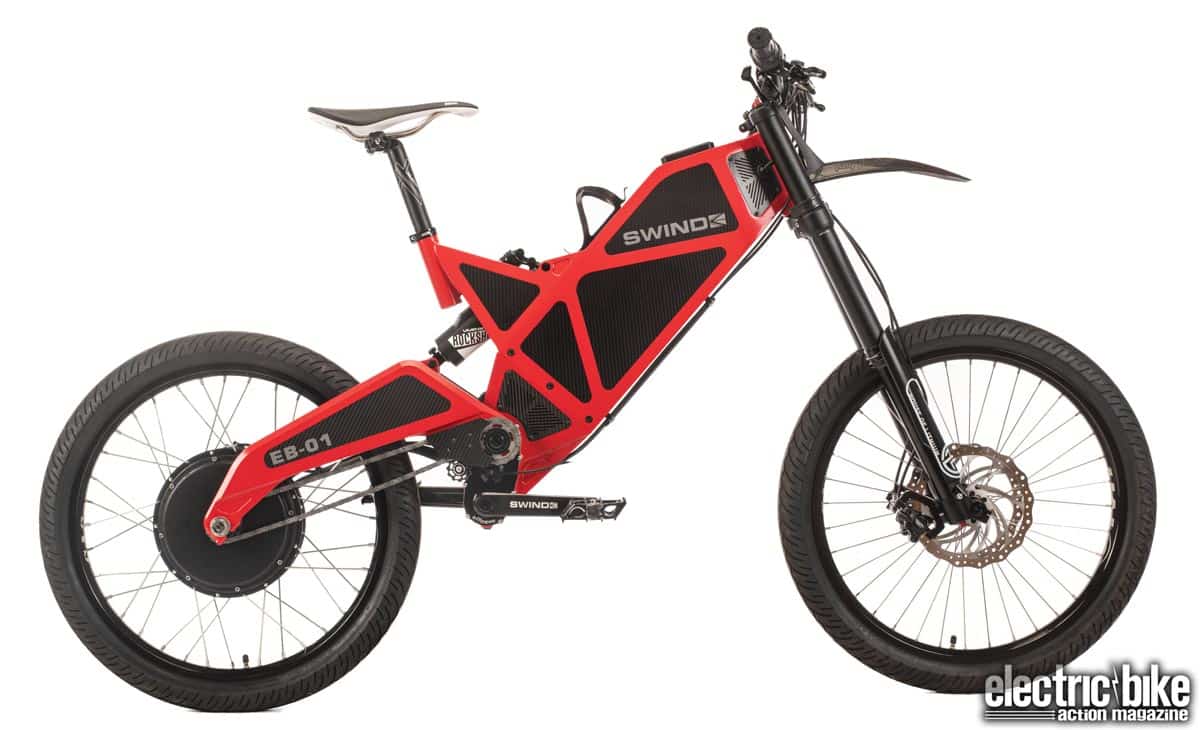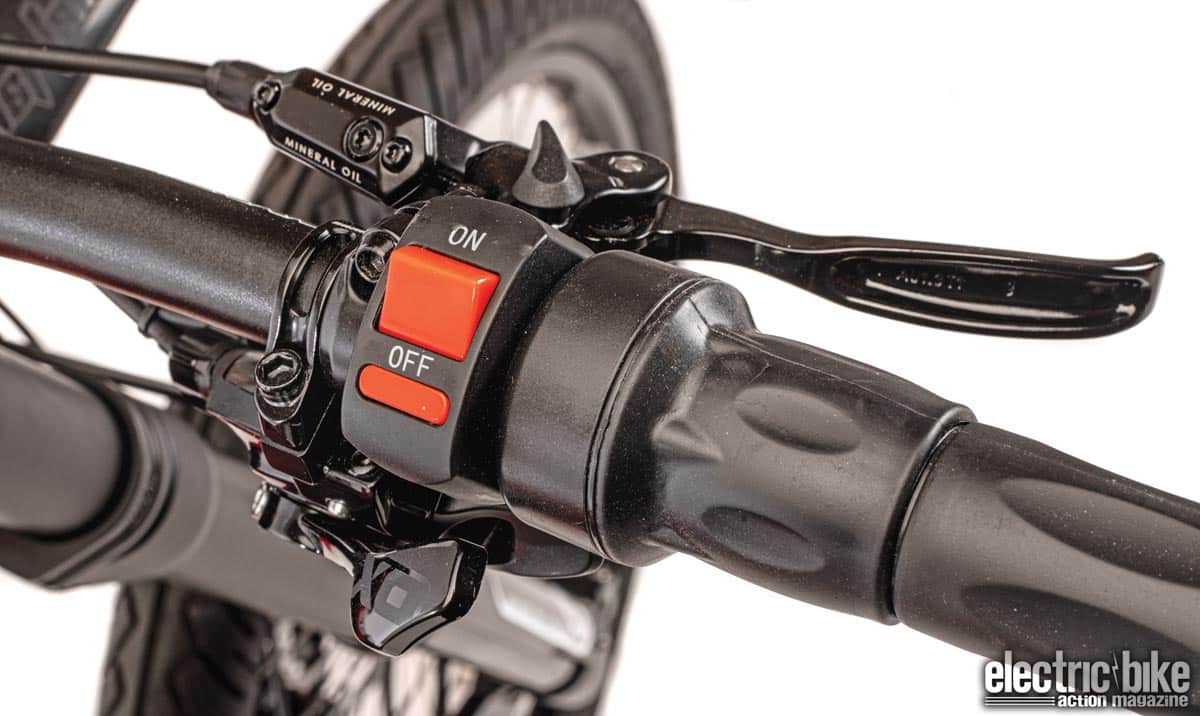
There you are, scrolling through your Facebook feed, when suddenly a snazzy e-bike image catches your eye. The advert is from a hop-up company touting an easy fix to get more power and speed out of your e-bike. More speed? Easily done? What could possibly be wrong with that? Well, as it turns out, a lot of things actually.
Not unlike putting a performance exhaust on a car or motorcycle, “de-restricting” a Class 1 e-bike motor has become a surefire way to provide added speed to your ride. We’ve recently been receiving queries from readers about the somewhat taboo subject: What exactly is the modification? Will it break my bike? Is it legal? How will anyone know if my bike has been modified?
We are seeing many pavement-oriented e-bikes being ridden on city streets with high-powered motors (and throttles to boot) that are capable of speeds exceeding the 28-mph Class 3 restriction. Thankfully, these bikes aren’t typically the e-mountain bikes used on the trails that have to fight for access. Class 1 bikes have the biggest demand for de-restricting, because some people want a little more top speed. Although it isn’t illegal to modify your bike, most shops want nothing to do with modifying Class 1 motors, because it could threaten their relationship with the manufacturers.

TECHNICALLY SPEAKING
If you’re not aware of what de-restricting means, we will serve as your conduit and hopefully not your gateway to this industry prescribed no-no. The most common way to describe the practice is when a device (aka “chip”) is installed in-line between the speed sensor and where the speed sensor is plugged into the motor’s computer. What it essentially does is trick your motor into bypassing the 20-mph assist limit.
“Remember, it’s called ‘power assist,’ and in addition to the good that comes from putting in a little bit of effort on the pedals, there’s nothing wrong with riding your e-bike in the lower assist modes, either.”
For example, SpeedBox is a European company that sells these devices for just about any e-bike motor on the market. SpeedBox claims their product “deactivates” the speed limiter that makes the motor say, “Oh no, I’m not giving enough support!” and proceeds to keep putting out power and pushing you past the 20-mph limit.
WHO PAYS THE PRICE?
When it comes to the use of aftermarket hacking products, you should know that they are forbidden by all the big bike manufacturers. Therefore, the chances of trying to pin the blame or cost of a motor failure on anyone other than yourself will be nearly impossible. When we inquired with SpeedBox, they replied that their customers have “not had any liability issues so far, and our products are available since 2014”.

Of course, as with so many other outside-the-rule consumer goods, you can buy just about anything legally, but how you use it is on you. SpeedBox does have a load of terms and conditions on their website that is obviously an attempt to avoid any liability.
IS A CHEATER DEVICE HARD ON MY MOTOR?
Most of the hard taxing of the motor comes from the low-end torque output, which puts the most force on the motor components. You won’t gain any Newton meters of torque or power from a de-restriction device, but you most likely will wear down your battery a little faster. Things like drivetrains, especially the small gears on the cassette, and bearings inside the motor will also have a shortened lifespan if you’re going as fast as possible all the time.
We’ve heard plenty of stories about certain motors, such as the Brose units used in Specialized e-bikes, that have been breaking. In the majority of cases, it’s because of the belt breaking and not the bearings going out or some catastrophic failure. The issue is that the low-end power from the 90 N/m assist unit was too much for the belt. Specialized had an app that would allow you to go faster than 20 mph, and it’s commonly used for de-restricting.

We’ve had friends at a local e-bike shop tell us that they’ve seen a de-restricted Yamaha PW-X motor with 8000 miles on it and still working fine. That may be more to do with the way the owner used it, but it’s still a testament to how far these motors can go. We’ve heard similar stories about the pre-Gen 4 Bosch units as well.
BEAR IN MIND
The speed demons that we are, we still appreciate the 20-mph limit on most e-mountain bikes as a fair pace for commuting and trail riding. Sure, it can be a little slow when riding on the bike path to get to the trail, but it’s not like we’re in a hurry to end our ride! While local laws may vary, there is no federal law against riding a Class 3 mountain bike. However, the big players of the industry have largely avoided Class 3 mountain bikes in hopes of encouraging responsible trail stewardship.
Admittedly, the e-bike laws in the U.S. can be as inconsistent as they are hard to know in some areas. Whether or not they are enforced is an altogether other question. Maybe it’s because there haven’t been an overwhelming number of accidents with e-bikes yet, or just that there aren’t enough e-bikes on the off-road trails yet.
Powermongers notwithstanding, when it comes to riding off-road, there really isn’t much of an advantage to having a bike that assists you past 20 mph-—unless you’re at a bike park with jumps that require more than 20 mph to clear. Most singletrack trails maintain a 5–20-mph max speed with exceptions here and there. The bike path is a different story, and we’ve seen home-built, custom hot-rodded machines out there cruising far past the 28-mph limit. That’s where we see red flags aplenty!
The more people abuse the posted speed limits, the better chance we’ll have tighter restrictions and enforcement. Riding on either private land or OHV-approved parks is where faster-than-legal e-bikes can have all the fun they want. If, however, an incident with a hiker or equestrian was caused by a non-legal e-bike, we would be heading towards potentially avoidable new laws.
WHO WOULD EVER KNOW?
Most motor manufacturers have the ability to go in and see how your motor has been used over the course of its lifetime. Our friends from e-bike shops told us there hasn’t been a huge number discrepancies so far regarding manufacturers wanting to investigate motor hacking.
Bosch claims that if their new Gen 4 motor has been hacked, the system would automatically shut down the next time a diagnostic test has been done. When it comes to Bosch, Yamaha, Shimano and Brose assist units, the rule is, anything that has been hacked will automatically void the warranty. It might be taking a serious and costly risk to de-restrict your Class 1 and some Class 3 motors, especially while still in your warranty period.

No different from cars or motorcycles that have the capacity to exceed posted speed limits, at the end of the day, it all comes down to personal responsibility and how each of us operates our bikes. Remember, it’s called “power assist,” and in addition to the good that comes from putting in a little bit of effort on the pedals, there’s nothing wrong with riding your e-bike in the lower assist modes. As always, the bottom line remains the same—ride often and ride safe!

THE SPEEDBOX DILEMMA
The four words we don’t like to read
While we are as enthusiastic about new e-bike technology as anyone, when it came to producing this story, we had more than a few internal debates on whether it was responsible to de-restrict an e-bike. Should we be putting an additional spotlight on the subject of de-restricting a motor? As noted above, there are no laws that specifically outlaw Class 3 upgrades, but quite frankly, we’re not big fans of the language found on the SpeedBox site: “SpeedBox is designed to not leave anything behind in the bike computer. So, it makes it a very unique tuning chip, especially combined with original connectors. If a customer needs to claim warranty or they go for some major checkup, they just simply uninstall SpeedBox and the dealer won’t notice that the drive unit has been tampered.” The key words there being, “[…] and the dealer won’t notice.” In the end, we decided that it would actually be more responsible to talk about the practice than to pretend it didn’t exist.
FOLLOW US on…
Facebook at /YourBestLifeGoods
Instagram at @YourBestLifeGoods
Twitter at @YBLGoods
Pinterest at YBLGoods
LinkedIn at YBLGoods

